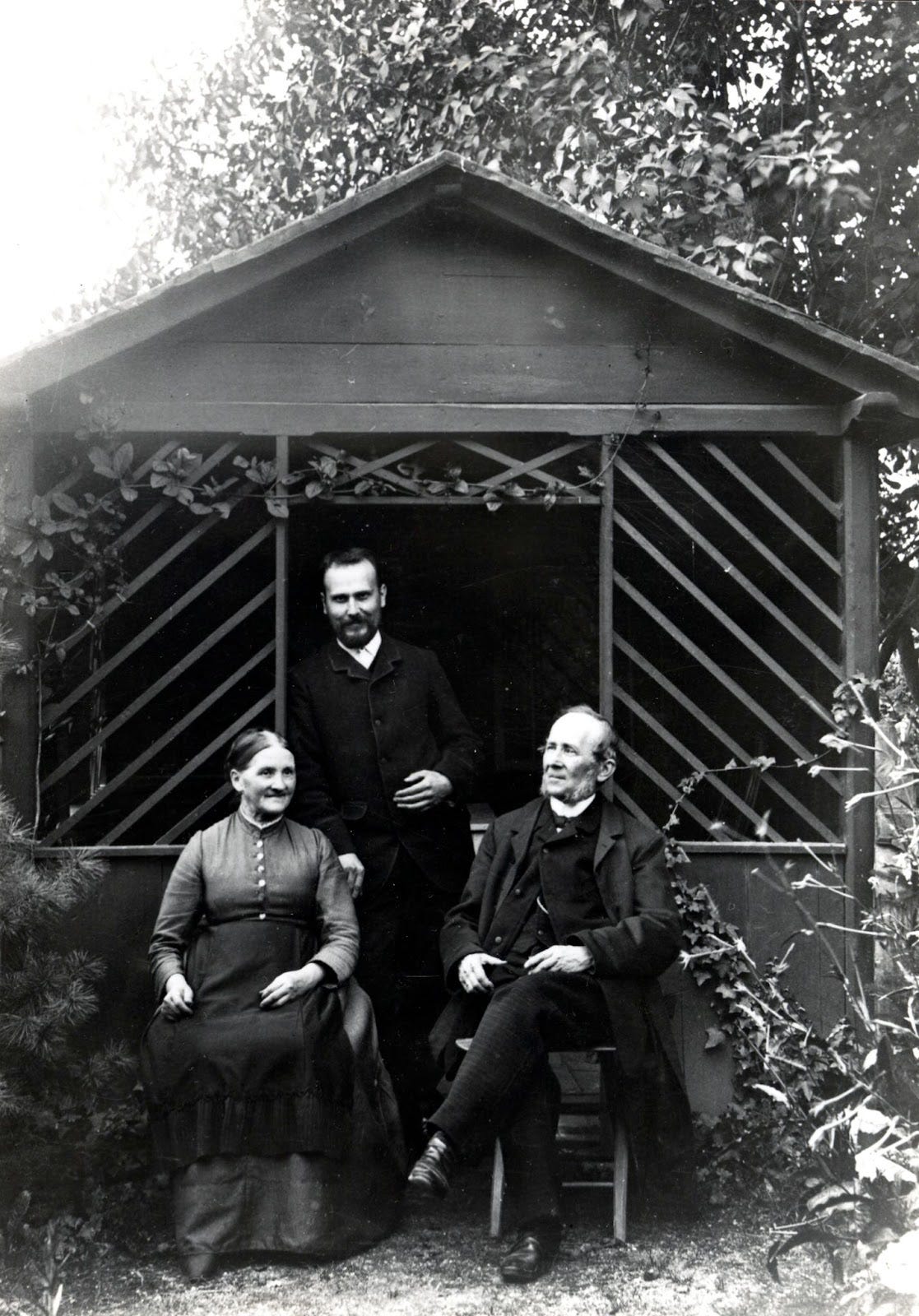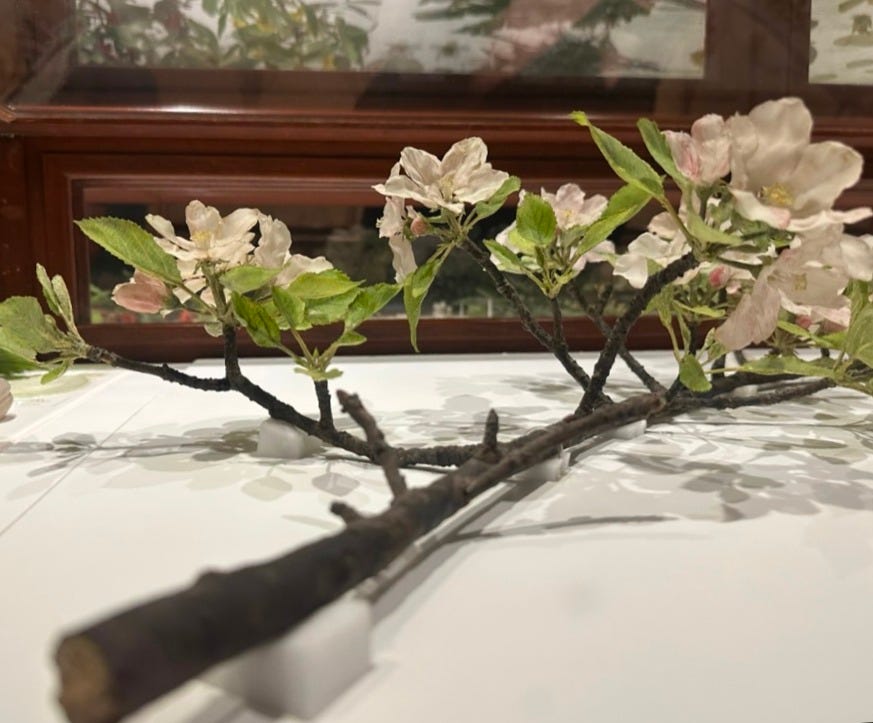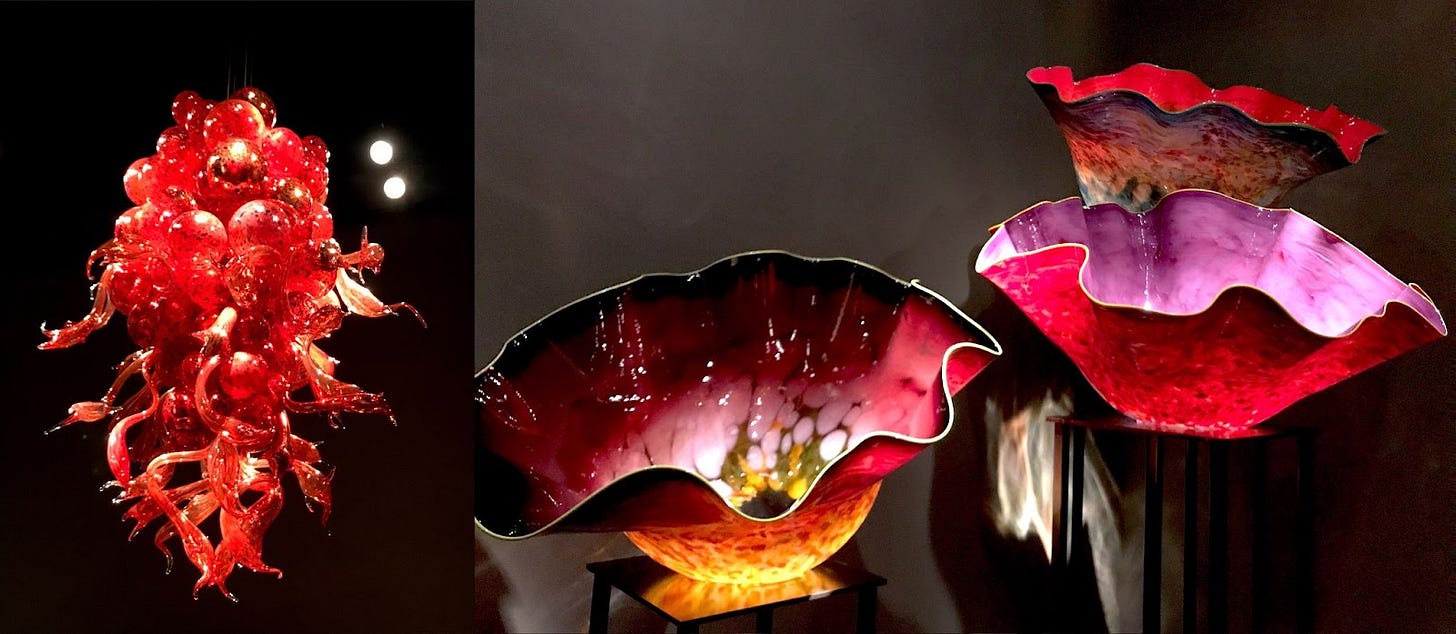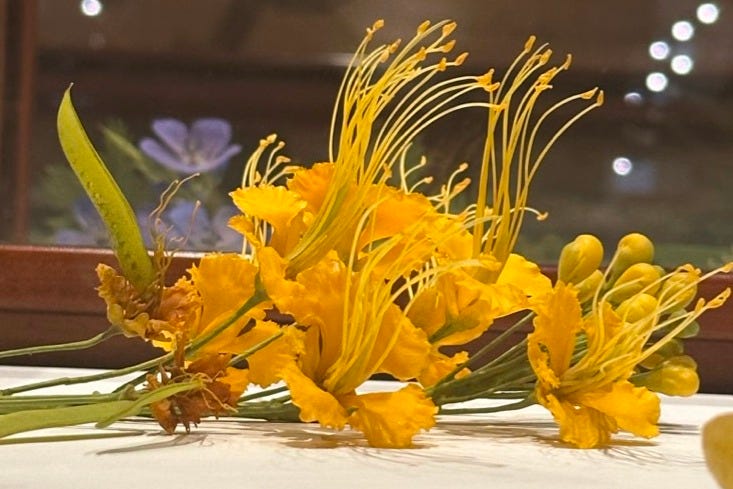Timeless Beauty Lost to Time: Art of the Glass Flowers
Solemn reminder of the fleeting fragility of human creativity.
“The only way to become a glass modeler of skill, I have often said to people, is to get a good great-grandfather who loved glass; then he is to have a son with like tastes; he is to be your grandfather. He in turn will have a son who must, as your father, be passionately fond of glass. You, as his son, can then try your hand, and it is your own fault if you do not succeed. But, if you do not have such ancestors, it is not your fault.”
- Leopold Blaschka, Glass Artist, 1822-1895
A few days ago, I visited the Harvard Museum of Natural History on a pilgrimage to The Glass Flowers, which first entranced me with their timeless beauty fifteen years ago.
The Glass Flowers are a treasure of over 3000 intricate botanical models, made between 1887 and 1937. They showcase stunning anatomical details of flowers, leaves, stems, and roots of nearly 800 species of plants from all over the world. More than 100,000 tourists tread gently through the dimly lit exhibits every year, in disbelief that the true-to-life beauty surrounding them is all made of glass, and not from fresh, alive plant specimens.

Besides the wonder invoked by the implausibility of their mimicry, that morning I felt something else, too. One of the museum curators shared a brief history of the exhibit, emphasizing its uniqueness — this collection of realistic artworks in Cambridge, Massachusetts is unmatched in its detailed accuracy of the shape, shade, and texture of a diverse range of plant forms. No other display of such thorough botanical beauty solidified in silica exists anywhere else in the word. That proclamation, intended to leave visitors impressed, left me feeling wistful instead.
Why does a handicraft so utterly exquisite exist in only one place in the world? How did such a breathtaking assortment come into being during only one sliver of human history?
These fragile works were originally created as educational tools, by Leopold and Rudolf Blaschka, father and son glass artists. Students of botany at Harvard couldn’t otherwise study the colors, textures, and complex forms of such plant diversity.
As these glass flowers replaced pressed and preserved dried botanical samples in the classroom, George Lincoln Goodale, the first director of Harvard’s Botanical Museum also realized their value as exhibits to the general public. Over decades, he acquired funding and commissioned the Blaschkas to exclusively work with him on creating thousands of these masterpieces.
Both then and now, no other glass artists were able to develop the skills needed to create similar sculptures.
Leopold was born in a lineage of glass and metal artists, destined to produce precious artifacts. His grandfather was a renowned glass worker in Bohemia, and his father a skilled painter. Leopold himself apprenticed with a goldsmith and gem-cutter before joining the family business that produced glass ornaments and glass eyes. Hence, he inherited many of the myriad skills that let him generate these gorgeous glass models blown, fused, wire-reinforced, and colored to perfection.
He layered his artistic legacy with some exceptional self-invented techniques. Working during the height of the Realism period of European art, Leopold unsurprisingly was fascinated with creating life-like representations of natural beauty. His early subjects were sea creatures, for which he learnt to create a wide range of transparencies in glass. Later, he also developed a new method called glass spinning that let him forge precise fine-structured works and delicate textures.
Luckily for Goodale and Harvard, Leopold passed on the practice of diligent observation and the impressive accumulation of skills to his only heir, Rudolph. After Leopold’s death in 1895, Rudolph kept sending elaborately packed specimens across the Atlantic for the next three decades. It is hard to imagine how the scale of the Glass Flowers collection could have been achieved without Rudolf’s excellent apprenticeship.
Glass artistry, like many other handicrafts, must be passed down through apprentices. We see such lineages across the world — from the Korean craft of weaving fine Mosi fabric in the Hansan region to the “romantic” hand-stitching of cricket-balls in the UK. What is it about these arts that necessitates direct passage across generations?
Such artworks showcase elaborate detail in the patterns and textures used — intricacy that defies deconstruction from looking at the final piece of art. There’s also the complexity that is known only to the originator — the way in which the interactions between different materials, paints, lighting, and techniques give rise to the properties, which can only be seen in their final emergent form.
The craftsmanship of the Glass Flowers, however, was never passed along. Rudolph retired at the age of 80 in 1938, having neither had any children nor trained any apprentices. The denouement of the Blaschkas’ artistry was capped off in dramatic fashion when their workshop in Dresden was destroyed by a bomb at the end of World War II.
Those endings coincided with mass-manufactured plastic replicas, easier travel, and freely copied photographs — a universe away from Leopold’s immersively artisanal world. As the handicraft of the Glass Flowers disappeared with the Blaschkas, so did the botany instructors seeking such refined recreations of stems, leaves, and flowers. With them, the primary impetus that had afforded years of dedication for the Glass Flowers was gone.
The next generation of glass artists have evolved into showcasing their passions for working with glass in other new ways. Contemporary glass sculptors in the Modernist canon emphasize imagination more than realism. Instead of modifying glass to mimic natural textures and colors, they use the medium to conjure fresh possibilities of form and ideas. Such works display the artists’ personal experience of reality, trading in natural details that were painstakingly captured by the Blaschkas.
Hence, the Glass Flowers, which embody a unique coincidence of progeniture, period, purpose, and performance, are at once a celebration of a historic flash of human creativity and a solemn reminder of its fragility. Would anything like them have existed at all if the Blaschkas’ lives had not intersected with George Goodale’s ambitions for the Harvard Botanical Museum?
It also makes one wonder how many such fleeting feats of human creativity are irretrievably buried in the many millennia of our unpreserved history? And how vast is the kaleidoscope of human creations that we may never know about - the forms of furniture, the genres of literature, and shapes of architecture that haven’t come to be.
While there is loss in those innumerable unrealized experiences, there is also tremendous hope in knowing that our artistic potential is endless, limited only by our skills and situations. And even as some arts are lost to time, limitless other creative frontiers are yet to be explored














I love the Glass Flowers, and how they are stored in those old cases
Thank you for introducing me to this collection Gairik! It's such an amazing feat and your photos do it justice. I love how you've shown what contemporary artists are doing with glass nowadays, although i agree it's sad to see the skills to make flowers have disappeared!